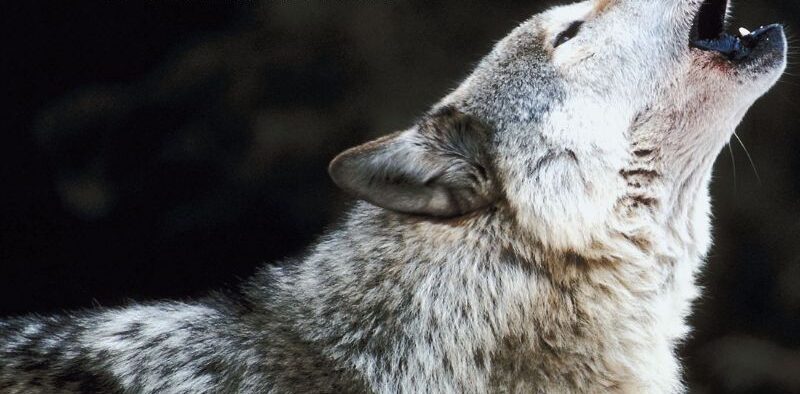The Rise and Fall of the Alpha Wolf
Share

Remember those high school movies where the popular kids ruled the high schools with an iron fist? That was the extent of society’s understanding of wolf packs for a while. Even we have written in jest about being the “alpha” of our pack! But, it’s not based on anything that’s close to reality. The rise and fall of the alpha wolf has been a long time coming and today we explore how that whole thing went down…
How the Alpha Wolf Myth Started…
Back in the day, a scientist (Rudolf Schenkel) studied captive wolves crammed into cages the size of your walk-in closet (not exactly the Ritz-Carlton of the canine world). He then in 1947, he published, Der Kampf der Tiere um Dasein und Raum or The Struggle of Animals for Existence and Space. However, here is why the study was so faulty:
- Focused on captive wolves in a small enclosure: The study observed wolves in a highly unnatural environment – a small enclosure at the Basel Zoological Garden. This doesn’t reflect how real wolf packs behave in the wild.
- Studies unrelated wolves: The wolves in the study came from different zoos and were NOT related. This creates a very different dynamic compared to a natural pack where members are usually family.
- Strong focus on dominance: Schenkel’s work placed a strong emphasis on dominance hierarchies established through aggression. This doesn’t accurately reflect how real wolf packs function, where cooperation and leadership are often based on age and breeding status.
Based on these observations, they declared the existence of an “alpha wolf” – basically the head honcho who kept everyone in line with feirce growls and dominance displays. This whole alpha wolf thing turned out to be about as accurate as portraying high school through the lens of teen romance flicks. Yes, alphas (of all species) are fun to write about in urban fantasy and the realms of werewolves and shapeshifters, but they don’t have a spot in real life.
Since that initial study was widely publicized by media, it’s been dramatically debunked (even by the author of the original study). But, that hasn’t stopped mainstream media and wanna-be tough guys from taking the overworn trope to a new level. Self-proclaimed “alpha males” are rampant in social media and that’s probably the best example of how overused it has become. If you have to tell everyone you’re an alpha, you’re not an alpha…
Just as fairy tales and myths have given a bad reputation to any predator or scavenger, wolves have been given a huge disservice by society. So, let’s talk about how real wolf packs function, and how it’s a much more accurate and beautiful model to aspire towards when it comes to packs…
How Scientific Information is Now Gathered
Wolf studies are ongoing research projects that use a variety of methods to collect data about the secret lives of wolves. These studies can include:
- Ground observations
- Aerial monitoring
- GPS satellite data
- Population, pack composition, and pup counts
- Genetic analyses
- Disease testing
Here is why real science is critically important in studying wolves:
- Understanding Real Wolf Behavior: Real science, like secretly tracking and observing wolves in the wild, helps us see their complex social structures, family dynamics, and decision-making processes. It’s the difference between thinking teenagers are constantly plotting rebellion and understanding they might just be helping raise their younger siblings (the heartwarming reality).
- Conservation Efforts: Knowing how wolf packs function is crucial for conservation efforts. If we think they’re all about dominance and fighting, we might try to manage them through aggressive tactics. Real science shows their cooperative nature and the importance of elder wolves. This can lead to conservation strategies that protect entire family units and the knowledge they hold.
- Protecting Other Species: Wolves are apex predators, meaning they play a vital role in the ecosystem. Understanding their behavior, like hunting techniques and territory needs, helps us manage prey populations and maintain a healthy balance in the environment.
- Avoiding Misconceptions: The “alpha wolf” myth is a perfect example of how misconceptions can be harmful. By using real science, we can avoid spreading fear or negativity about wolves. Instead, we can appreciate their intelligence, family bonds, and role in the natural world.
- Uncovering Unexpected Connections: The parasite twist in the article highlights the fascinating discoveries real science can bring. Understanding the link between Toxoplasmosis and wolf behavior opens doors to further research on how parasites might influence other animal species. It’s like finding a hidden plot point in a movie – it adds a whole new layer of intrigue and complexity to the story.
In short, real science helps us appreciate the true nature of wolves, their role in the environment, and the fascinating world they inhabit. It’s way more interesting (but way less dramatic) than the fairy tales we’ve been taught throughout history!
The Brady Bunch of the Wild: Introducing the Real Wolf Pack
Thankfully, science has evolved past the “wolf-in-a-box” method of study. Thanks to researchers who bravely followed truly wild wolves around (sometimes even hiding in fish houses, we now know wolf packs are more like a healthy, well-adjusted family (minus the teenage angst, hopefully).
The leaders are typically the breeding pair – think Mom and Dad wolf, the ultimate power couple of the wilderness. Their offspring, sometimes even the teenagers (often referred to as yearlings), might even stick around to help raise the next batch of pups. It’s all about survival – someone’s got to teach the little ones the finer points of chasing prey and avoiding the flying machines that shoot bullets from the sky.
Wolf Socials: Less “Hunger Games,” More “Famly Game Night”
Sure, wolf packs have their squabbles, especially when it comes to territory (I mean, don’t we all?). But there are no cage matches to become “top dog.” In fact, woves have a social grouping that is similar to a matrilineal society – where women head the household and care for the family.
The older, wiser wolves – usually a “grandma wolf” is the dispenser of wisdom and, like all granmothers, maybe some great treats. This family system is crucial for the pack’s success. They keep everyone feel calm, make good decisions (like knowing when to avoid a fight they can’t win), and probably dispense sage advice like, “Early to bed, early to rise, and catch that pesky rabbit before breakfast!”
Surprise! Parasites Might Be the Real Alphas
Here’s a plot twist wilder than a nature documentary gone rogue: a tiny parasite called Toxoplasmosis might be secretly calling the shots. This little villain can hitch a ride from a cougar into a wolf’s belly and then convince the wolf to do things that benefit the parasite, like leaving the pack to find a mate. Think of them as the walkers from The Walking Dead, but way sneakier and way smaller. In a related story, there’s also a theory that yeast might be subtly influencing human behavior, which explains a whole lot about that craving for pizza at 3 am (just kidding… mostly).
Wolves: More Than Just Scary Storybook Creatures
For centuries, humans have both feared and admired wolves. In some cultures, they’re seen as wise mentors, while in others they’re the furry equivalent of the boogeyman. The truth is, wolves are complex animals with fascinating social structures and a surprising susceptibility to mind-controlling parasites (who knew?). And who knows, maybe someday we’ll discover even wilder things about them, like their secret love of polka music or their dream of opening a gourmet dog biscuit bakery.
Education is Key: Follow these Studies
We hope you want to learn more about these amazing animals and help stop the feeding frenzy on the species. Research has also shown that wolves are more intelligent than domesticated dogs, with a better understanding of cause and effect, and the ability to follow human-issued directions. Wolves can also influence the dynamics of wildlife species across an entire ecosystem, altering predator-prey relationships and even the natural landscape
- Yellowstone Wolf Project: A detailed study that uses a variety of methods to monitor wolves, including VHF and GPS collaring, telemetry monitoring, and GPS satellite data. Shows that humans are a major cause of mortality for wolves in national parks, and that this can lead to instability in wolf packs.
- California Wolf Center: The California Wolf Center, previously known as the Julian Center for Science and Education, was originally founded in 1977 by Paul and Judy Kenis. Starting with just two North American gray wolves, our mission from the start was to teach the public about the importance of wolves in their ecosystem
- Oakland Zoo: Studies gray wolves
- International Wolf Center: Uses puzzle boxes, rain sticks, and papier-mâché balls to evaluate the personality and problem-solving skills of captive wolves and their studies are published in *Frontiers in Ecology and the Environment.










